If like me, you love shooting film, whether slide film, negative film or black & white, you may have been looking into getting yourself a medium format (MF) camera. MF cameras are available on the second hand market for a good price, and there is a definite improvement in image quality; stepping up to even the smallest medium format (6×4.5) means over two and a half times the negative size of 35mm.
It?s not all wine and roses with MF however; to get a decent sized negative, everything that sits in front of the light sensitive film; the lens and the camera tends to be ?on the large side of things?. Think 35mm camera on steroids and you get the idea. If you haven?t seen and held a medium format camera in the flesh you will find it amusing the first time you pick one up.
Of the three largish cameras I own, the GA645 Zi is the biggest frame, as expected, but it?s not that much bigger than my Nikon F100 with its 50mm lens (bear in mind the GA645Zi weighs 972g, compared to 1.14kg for the F100 tank with 50mm f1.8G plastic Chinese lens, and 790g for the OM1n with 50mm f1.4 Zuiko lens. Considering the weight of the tough little mechanical OM1n, you wonder why Nikon couldn?t have made the F100 a bit smaller. The F100 feels like a solid indestructible lump.
The first Medium Format camera I bought was a Yashicamat 124G. The Yashicamat?s 80mm lens is equivalent to a 50mm on 35mm or full frame, I also had a close up lens to take closer photos. The close up sets from a rolleiflex TLR work just fine. All in all, it was a lovely introduction to MF, but I found it slow and clunky to use. Heres an example of a photo taken on the Yashi in the Cathdrale d?Albi in France. I placed the camera on the altar steps and set the timer. Even in its compressed format, you can see how much detail the 6×6 format captures. Not bad for a 1960?s camera, and it definitely shows the benefit of a fixed lens.
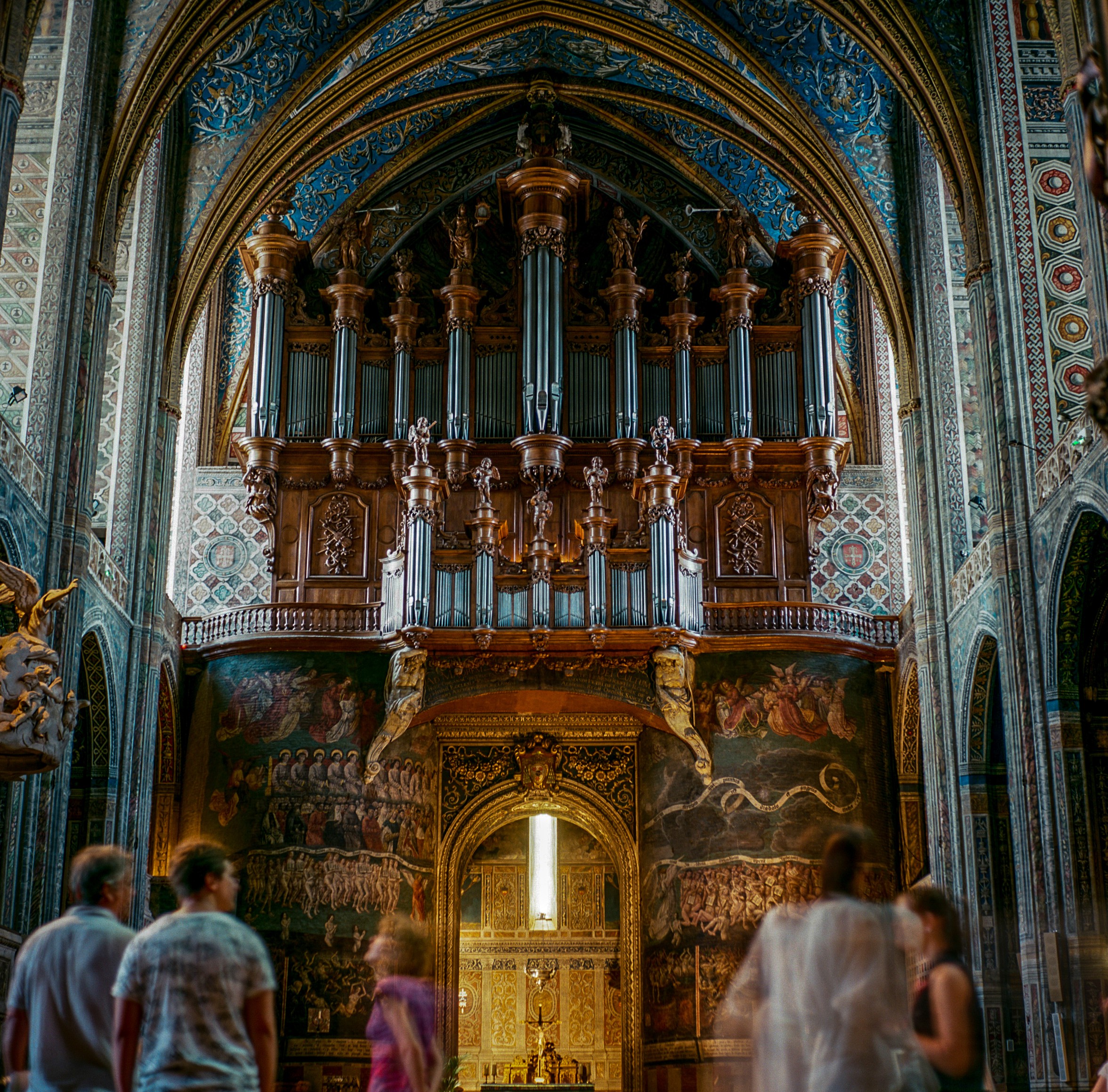 Cathdrale D?Albi
Cathdrale D?Albi
The next MF camera I bought was a Fujifilm GA645Zi
My example came from japancamerahunter, and cost around 400 all in, and when I bought it I was quite happy with the purchase. Shortly after things started going wrong. I quickly learned that these cameras suffer with failing LCD panels on the back of the camera; the ribbon which feeds the LCD gets trapped with each film loading and gradually wears out. Mine started failing, which was annoying as I had paid top dollar for a ?very good condition? specimen.
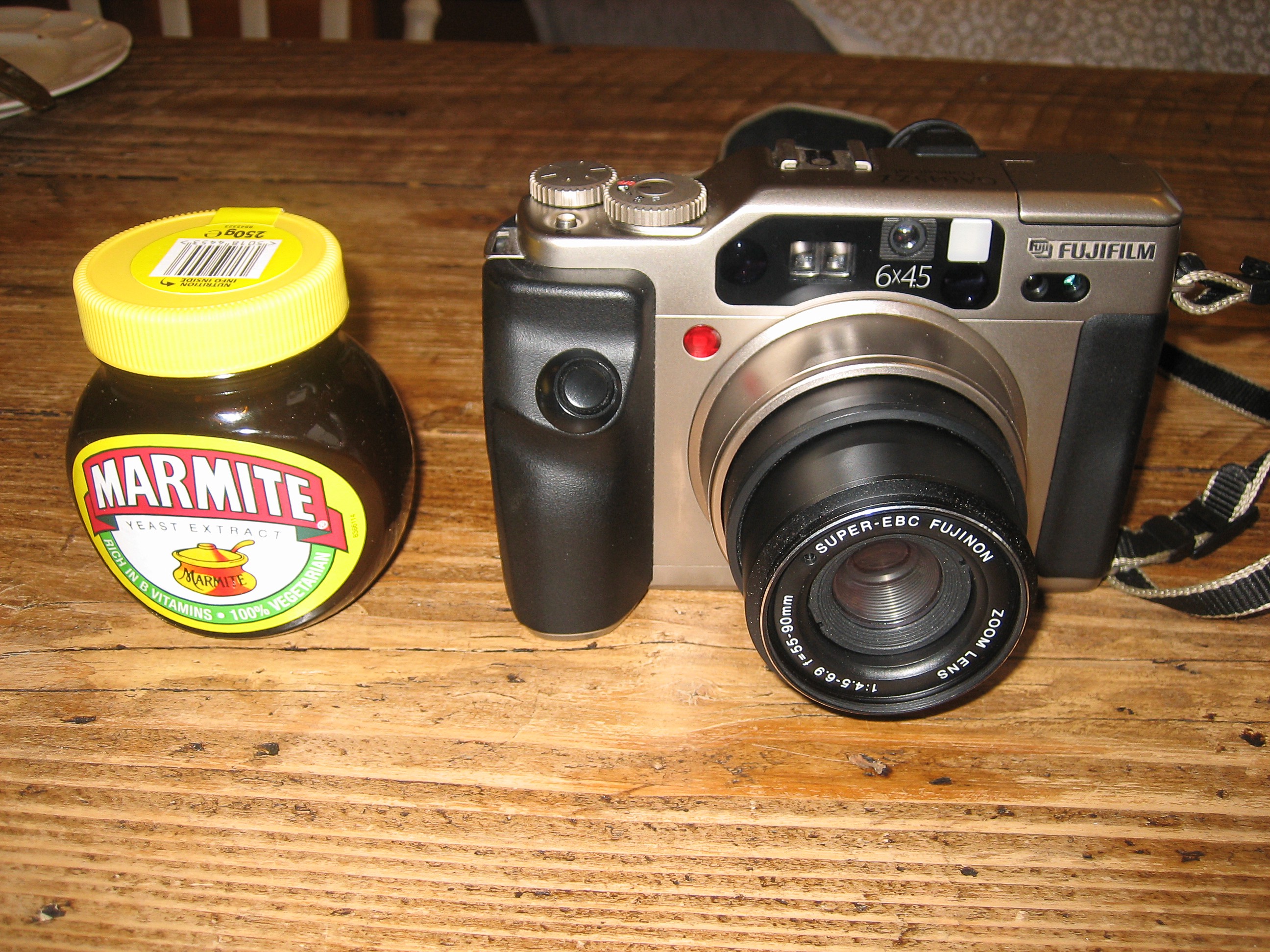 Fujifilm GA645Zi ? bigger than a jar of Marmite ? ?You either love it or you hate it!?
Fujifilm GA645Zi ? bigger than a jar of Marmite ? ?You either love it or you hate it!?
Speaking to Fujifilm directly and then to the company which used to fix these cameras on their behalf, I learned that the LCD failing is the GA645Zi Achilles heel.
The controls are basic. The main control dial is operated by pressing down the lock button and rotating, it selects ISO, OFF, P, A, AS, and M.
The secondary adjuster dial is used to set ISO, to select the Aperture on A and AS and M modes. Manual shutter speed in M mode is set by using the secondary adjuster while holding down the +/- exposure compensation button. It is also used to adjust the Data imprinting mode, to select between Autofocus and manual, and to adjust the Exposure Compensation while holding down the +/- button.

AS is a slow synchro aperture priority mode, which you might want to use at night in conjunction with the Flash. M is manual exposure mode where both aperture and shutter speed must be specified.
On the rear LCD panel you have two buttons and a light button to light up the LCD: DATA is used in conjunction with the secondary selector to change the data imprinting mode, and AF/M is used to select between AF and manual focus.
 Rear LCD can fail (Check it is working before buying)
Rear LCD can fail (Check it is working before buying)
I have not used Manual focussing mode, but if I was planning to, I would probably set the camera to focus at the hyperfocal distance.
The LCD shows the film type, 120/220 (this can be changed without opening the back, by putting the camera into ISO, holding down the DATA button and using the secondary selector dial), Also shown in the LCD are Exposure Counter, whether data imprinting is on or off, and ISO. There is also a battery meter.
To the left of the LCD is a little sleeve for you to feed your film box lid, so you know what?s in the camera. The rear of the camera has a zoom button, which works somewhat arbitrarily; press and hold and it goes the whole way from fully retracted to fully extended, so if you want to move it one ?click? you will need to do the ?clicking? yourself by pressing the button and quickly releasing, the function of the zoom button seems a bit hit and miss, but as there is no detente on the zoom button it is hard to say whether you have pressed it properly.
The same can be said for the main Adjuster dial. Rotating the dial from OFF to P mode should cause the lens to come out of its retracted position inside the body, but if you rotate the dial too quickly, the camera doesn?t register the move, and so the lens remains inside the body.
In this sense the camera feels old fashioned and ?electro-mechanical? when compared to the modern smooth and silent motors inside digital cameras. The sound of the lens zooming, focussing and the frame advance are all old school mechanical whirring, grating noises. Let?s hope the reason for the excessive noise is down to an industrial build quality which will last the ages.
With the lens fully extended, the whole mechanism feels a bit ?wobbly? there is about half a millimetre of free play in the lens barrel. It doesn?t feel like it is about to fall off, but I wonder how well it would take a knock.
The timer and flash buttons are to the left of the viewfinder with adjustable diopter. The built-in flash will never pop-up automatically; you need to select it (this is a professional camera, so you need to be too!)
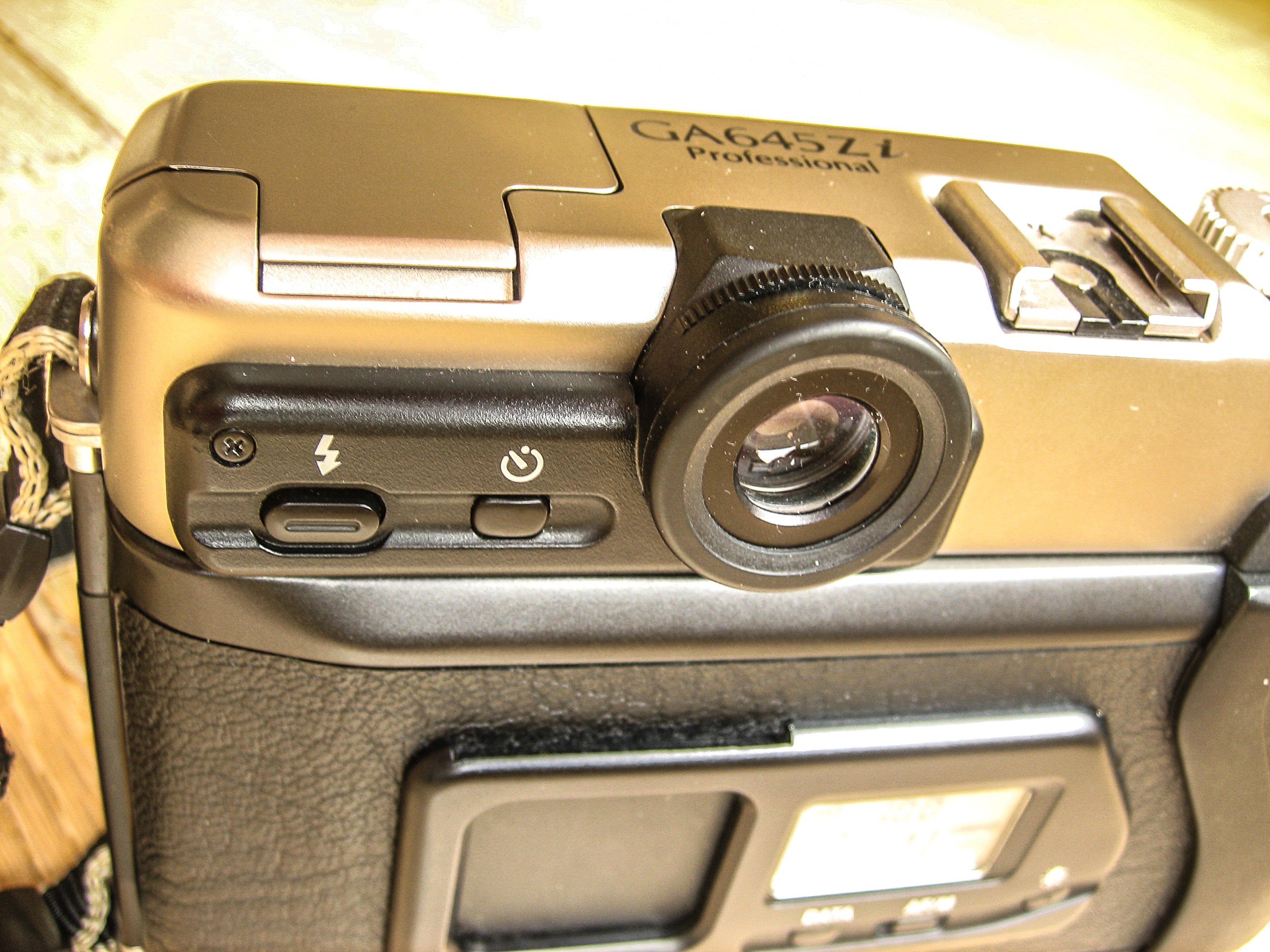 Left to right: Flash PC sync socket, Flash pop-up, timer, adjustable viewfinder, flash hot-shoe
Left to right: Flash PC sync socket, Flash pop-up, timer, adjustable viewfinder, flash hot-shoe
The Flash PC sync is located on the top left of the camera body near where the strap attaches, and on the right hand side is the threaded manual shutter release.
The base of the camera is metal, there is the Battery compartment, operated by means of a coin (be careful not to over tighten the plastic thread, it is fragile). The two spool lock-in buttons typical of Fuji MF cameras, and the film rewind button recessed into the base (this is a bit dodgy, as placing your camera on an uneven surface could trigger film rewind before the roll is exposed.
Inside the film door is a 120/220 film toggle button, and little red buttons to release the spools when changing film. The rear door is opened by means of a catch on the right hand side of the camera.

Door Open Mechanism, top left is the threaded shutter cable release socket, crack is visible on the bottom left of the photo ? this is common with these cameras, and is probably a stress fracture.
The camera had three strap mounts which allows for a strap to be mounted either vertically, or horizontally.
Viewfinder
The viewfinder has basic shooting information inside; indicating the Aperture selected at the top left, and underneath the Shutter speed. It also indicates when the flash has been selected with a little flash symbol bottom left.
In the event that the flash is selected the camera automatically selects 1/45 of a second in P mode.

f6.9, 1/45th with flash activated
To the right of the image is the focussing meter, with a number of points between 1m which is the nearest focal length and infinity. Due to the poor autofocusing focussing performance of the GA645Zi
If the camera is focussed on something less than 1m, the block at 1m will flash to indicate that the shot will not be in focus. Personally I think a giant sign across the viewfinder stating ?DO NOT PRESS? would be more appropriate, or perhaps a load of giant red pound signs
instead you get this:
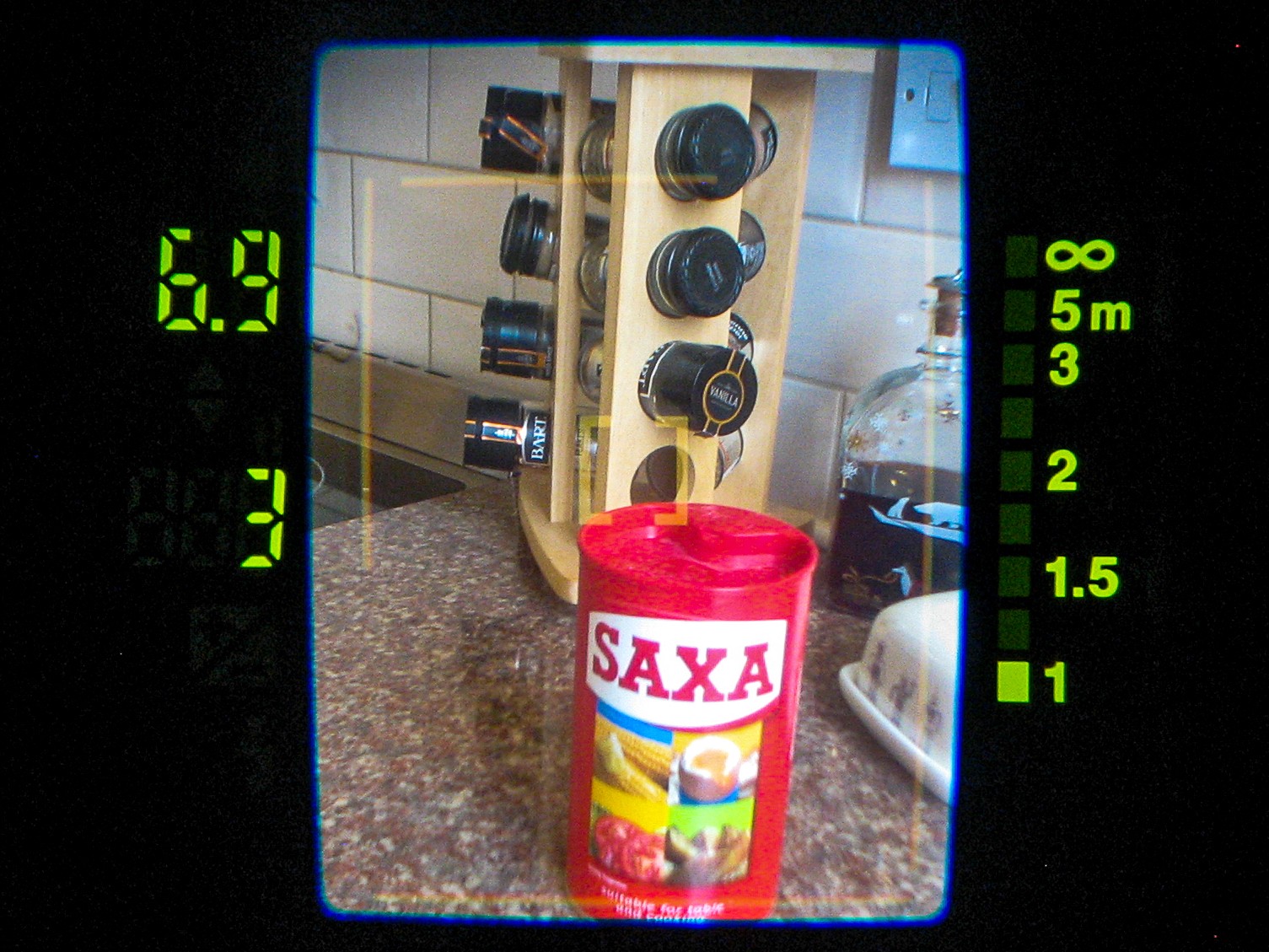
f6.9, 1/3s: Notice the framing lines have come in from the top left to account for parallax error, what it doesn?t say is that they would also like to go further out to the bottom right.
The camera focus point is the yellow box in the centre of the frame. As the camera zooms, and as the camera focusses, the framing lines automatically move in and out to take into account parallax error. In reality I have found these lines to be OK, but not brilliant at parallax compensation, with a number of my shots poorly framed, despite paying them great attention. If in doubt leave a little extra room and crop your frame afterwards for the final shot.
Of all of my MF cameras, the GA645Zi is the one I have taken the most photos with, becasue it is easily the most portable.
What?s are the Good Points?
- It feels good in the hand, the grip is countered and the shutter release is well positioned.
- It is compact and light (under 1kg) for a MF camera. It may look like it has been on the ?roids but it is among the smallest MF cameras out there.
- The lens retracts into the camera body.
- The lens is quite slow (4.5?6.9), but on the plus side image quality is very good at all zoom focal lengths ? see images below
- It is ideal as a portrait camera (over 1m distance) and for landscapes. No GA645Zi
- Metering is generally accurate, even with slide film. Sometimes the camera has overexposed a shot, but this was a rare case. It works better with negative film, or with slide film when the light is flat and unchanging.
- The camera has a metal case and should withstand knocks pretty well, the inside, back are plastic, and the hand grip plastic too. The plastic on the back can develop cracks, not sure how, but it seems to be par for the course with these cameras.
- Rudimentary 4 position zoom works well with regards to framing, if you are taking landscape shots, you cannot get appreciably closer to infinity by moving your feet, but going from 55mm to 90mm will give you a better framed shot.
- Built in fill flash works very well.
- Leaf shutter will give you handheld shots down to ridiculously slow shutter speeds; I have successfully shot down to 1/8th of a second which is super useful when shooting slide film in the UK?s normally inclement weather. ISO50 (slide) film is great for Ken Rockwell in California, but the UK is a totally different kettle of fish. Sunshine? Yeah, we had some last summer??.
What?s not so Good?
- Close focussing. The camera will not focus below 1 metre. This is the biggest pain about the camera. It would be a really great tool if it could. I never thought I cared about minimum focus distance until I got this camera. Taking photos of your friends around the table? Don?t bother, they will all come out blurred. Annoyingly, it will still take photos under that distance. Although the viewfinder will conveniently flash to let you know that you?re about to waste your money. Perhaps Fuji thought that people might want to have creative control to take blurred photos deliberately. I don?t think calling a camera professional is an excuse to leave out a basic function.
- Like many MF cameras, the focussing is extremely basic and not recommended for (even slow) moving subjects. There is no S mode, so you would need to use the largest aperture in A mode, and let the camera set the shutter speed for you, thought this would give you a much shallower DoF, and potential for focussing errors that way. Maximum shutter speed is 1/700th, which is typical for a leaf shutter of this vintage. I just don?t bother using it with anything in motion.
- The camera apparently suffers from flare, and comes with a lens hood. Oddly, to fit the lens cover, you need to remove the lens hood first. Just buy yourself a 52mm UV filter and leave the lens hood in the bag.
- This camera has also been frustrating with regards to focussing errors. Point it at something big and with lots of contrast or you will get a blurry shot. A number of frames of important wedding photos came out with the subject blurred, when the camera really should have nailed it. I would rather use a manual focus camera to ensure that I get the focus right than rely on this Fuji to do the job! But alas this is the nature of the point and shoot camera, convenient most of the time, frustrating when it doesn?t work. Always check the viewfinder to make sure your camera is looking where you think it is. In reality, you are better off with a fast film, and a smaller aperture to ensure you get a focussed photo. If you are thinking about giving the camera to someone else to take a photo of you, don?t bother, you may as well throw your money down the drain.
- The viewfinder does have parallax error compensation, the viewfinder frame lines move depending on the focus point, it gives you an idea, but it?s not that accurate so you need to leave some room to spare.
- The data imprinting function which puts the shooting data and date on the edge of the frame works intermittently, which is another annoying glitch. Sometimes it prints the date and the exposure settings, sometimes it prints the date, and sometimes it prints nothing.
- LCD failure, for obvious reasons
- The camera is noisy in focussing, and its focus seems somewhat rudimentary.
Conclusions and Sample Photos
The GA645Zi is as good as a compact point and shoot medium format film camera gets. If you want a cheaper Fuji 645 camera, I would recommend you take a look at eBay for a fixed lens Fuji GA645 (the one without the zoom), or even better the GS645 which is a manual focus folding camera, a bit like the thoroughly modern and beautiful GF670.
You can read Cameron Kline?s review on the Fuji GA645 at filmshootercollective. If you are offered a Zi, bear in mind the LCD issues and price accordingly. There are plenty on eBay in both the UK and Japan. In the right hands they can take exceptional photos, just don?t pay too much. 200?250 should net you a good example.
Here are some more photos taken with the GA645 Zi, so you can judge for yourself
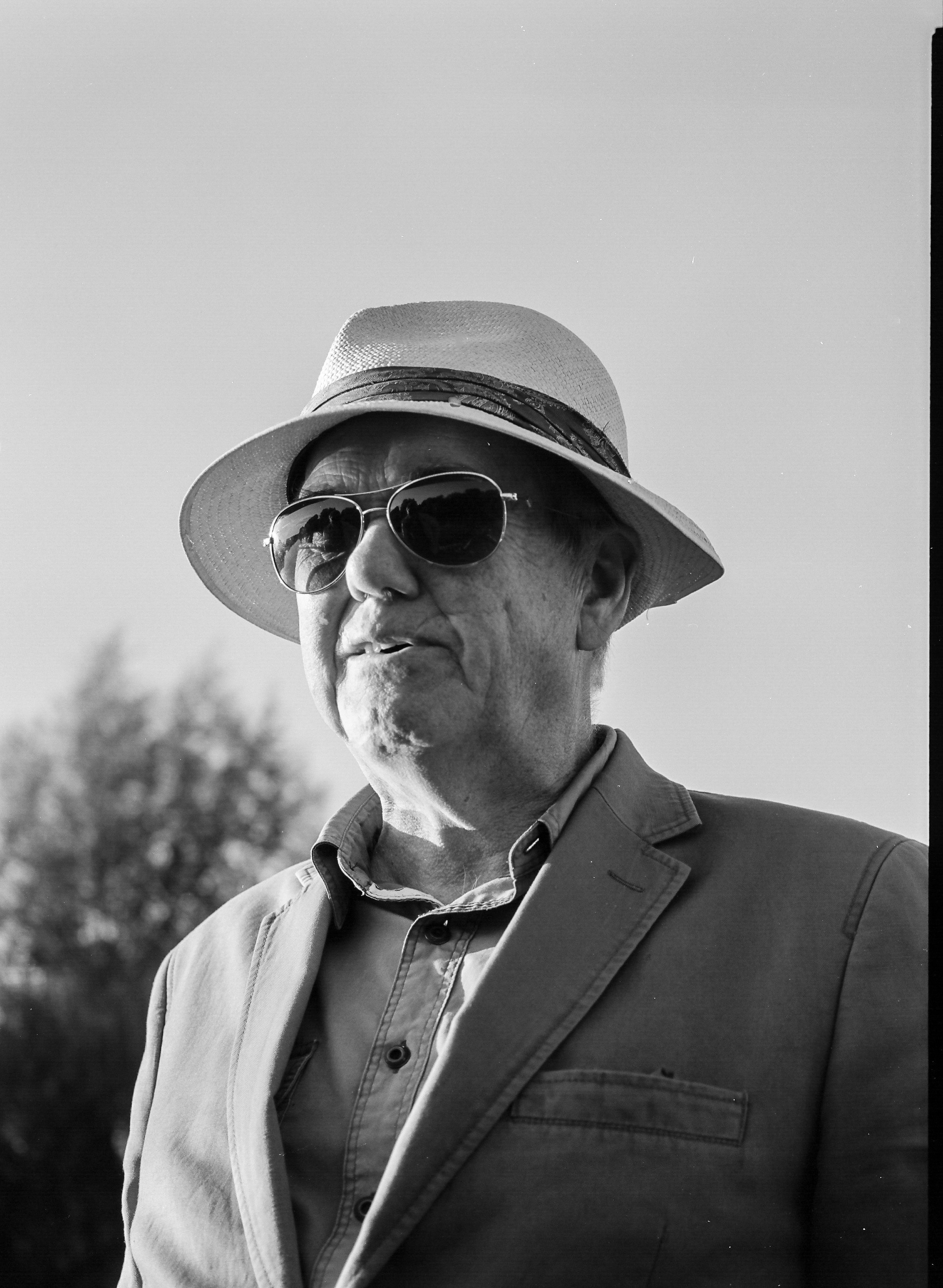 Cruise on Honey Bee ? Ilford Pan F50
Cruise on Honey Bee ? Ilford Pan F50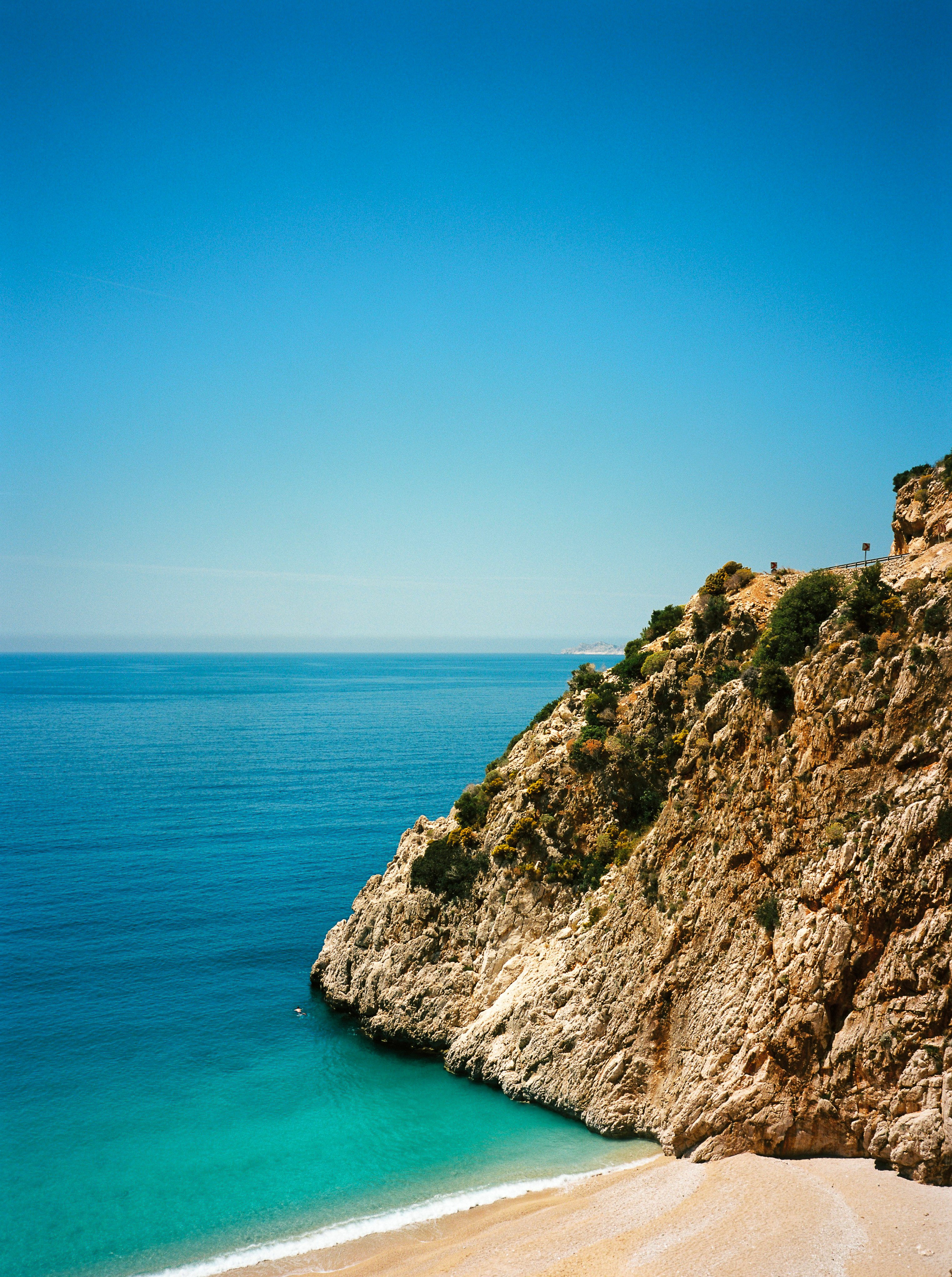 Turkey Beach ? Ektar100
Turkey Beach ? Ektar100 Canyoning in Turkey ? Ektar100
Canyoning in Turkey ? Ektar100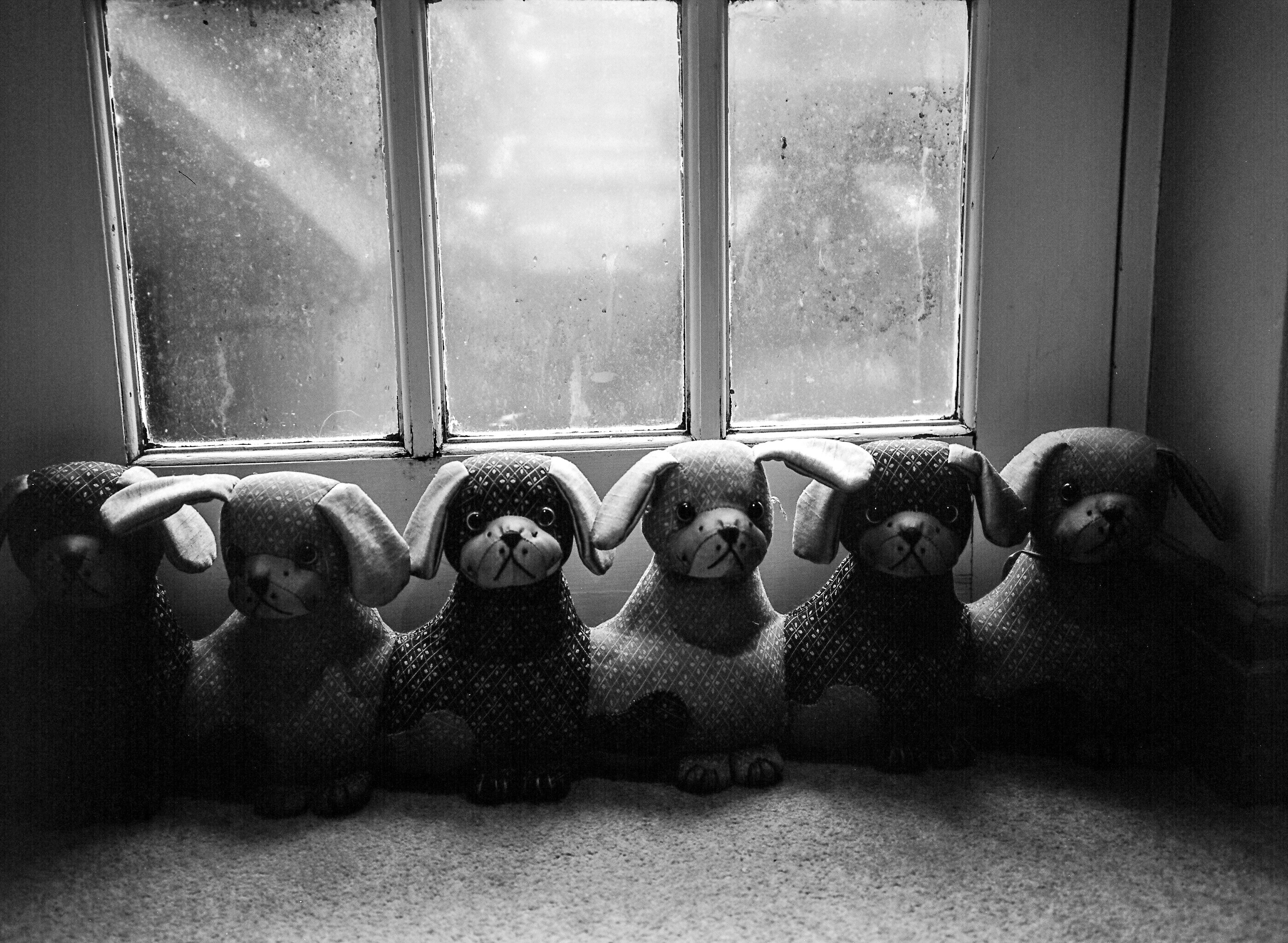 Red Lion in Osmotherley ? Ilford PanF50
Red Lion in Osmotherley ? Ilford PanF50 Cheltenham Gold Cup ? Ektar100
Cheltenham Gold Cup ? Ektar100 Maisie ? Ektar100
Maisie ? Ektar100 English National Sheepdog Trials, Northleach ? Fuji Velvia 100
English National Sheepdog Trials, Northleach ? Fuji Velvia 100 Bluebell Woods ? Ektar100
Bluebell Woods ? Ektar100 Morzine (French Alps) ? Fuji Velvia 100
Morzine (French Alps) ? Fuji Velvia 100
Also worth considering:
- The Yashicamat 124G a Twin Lens Reflex camera similar to a Rolleiflex TLR which I have reviewed here
- Bronica SQ and ETRS, 6×6 and 645 cameras with leaf shutter casio lenses.
Olympus OM1 Review
The first ‘proper’ camera I bought was a silver and black Olympus OM1 which I bought with a 50mm f1.4 Zuiko lens from?
link.medium.com
If you liked this, click the ? below so other people will see it here on Medium. The more you share, the more reveiws I can post 🙂
